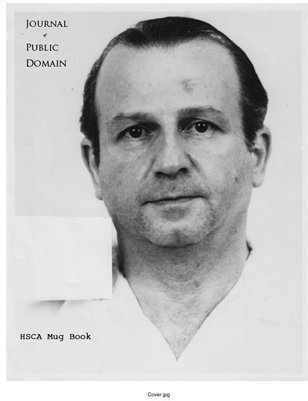Black Nissan LEAF, Pasadena, CA
I don't often mention how great it feels to drive a LEAF, and it is something that often goes unmentioned when folks talk about the merits of electric cars. Because all of the electric motor's torque is available as soon as the accelerator is pressed, EVs are impressive at moving away from a stop light. This rush of quiet acceleration becomes addictive, and when we switch to a gasoline (ICE) car, we miss that smooth, calm and quiet push in the back. It really adds to the fun of owning the car, and it makes an otherwise fairly ordinary car feel more luxurious. This is part of the reason why many who drive electric cars really don't look forward to driving gas cars again.
White Nissan LEAF Testing Against Honda Fit EV, June 2012, Pasadena, CA
Good News from Edison
Our monthly fuel "bill" for June came in as a credit of $75.78 even though we used a net 94 kWh more than our solar PV system generated and we charged the LEAF with 230 kWh of night time power. That is because days are longer, the sun is shining, summer rates have kicked in and we get a full retail credit of about 20 cents for every kWh we generate in Tier 1 and 56 cents in Tier 2 during Peak hours. These credits strongly offset our Off Peak household usage and our Super Off Peak (midnight to 6 am) EV charging, so that we end up with a substantial credit at the end of the month. June was month #4 of our net metering year, and we now have a credit balance of $14.53 for the year to date. That credit balance will grow over the summer months, through the end of September, and will help us to end the year on March 6 with another net bill of around zero for the year. Note that we do not air condition our home, so we have no heavy electrical usage during the daytime hours, beyond a bit of cooking. Homeowners who do use a lot of daytime summer power for air conditioning, pool heating or electronic equipment would have different results with Southern Cal Edison's Time of Use rates, so study your own situation carefully before trying to copy our plan. It may help to consider moving some of that power usage to evenings or better still, late at night.
We also finally got our check from SCE for the excess net solar power generation that we logged for our net metering year that ended in March of 2011. Fifteen months later, SCE sent us a check for $72 for the 2200 kWh surplus with which we ended that year. We were paid at a rate of about three cents per kWh, similar to the wholesale rates that SCE pays to their other energy suppliers, but a far cry lower than the retail rates that SCE charges. I'm not unhappy with this amount, though, since I do feel that our neighbors shouldn't pay more for the power that their utility buys from us than they pay for the power that SCE buys from other suppliers. That said, I'd like to think that the power that we sell to SCE is worth more to our neighbors because it is clean, green solar power that only has to travel next door to our neighbor's house rather than hundreds of miles through SCE's grid.
Our LEAF's Dash. The 12 Bars on the Far Right Indicate Battery Capacity. The Adjacent Scale Showing 11 bars Indicates Approximate Current Charge State
Let's Talk About LEAF Battery Capacity
I mentioned last month that reports have started to appear on the My Nissan LEAF online forum and in online blogs Link of battery capacity loss from LEAF owners in the hot summer regions of Arizona, Texas and one in the Mojave Desert town of Ridgecrest, California, who have been driving their cars for about a year. Some of these folks say that the reduced driving range keeps them from being able to use their LEAFs for the longer trips that they need to make. The service departments of Nissan dealers have told these customers that their batteries are healthy and that the loss of capacity bars is normal. Link
When asked in June by Green Car Reports about this issue, Nissan's spokesperson responded that all batteries lose capacity and that most capacity loss will occur early in the car's life and then level out in the remaining years. She stated that Nissan's internal tests show that under normal use, Nissan expects owners to have 80% of the battery's usable capacity remaining after five years. Link But some of the Arizona LEAF owners say that they have already lost this much capacity or more. At the time of this writing, Nissan has responded by asking all LEAF owners who are having apparent heat related battery capacity loss to contact their NOGASEV 800 number and get a case number. In addition, we now hear that Nissan is planning to take about six of the cars to Nissan's testing facility in Arizona for testing. Owners will be given loaner cars and compensation for gasoline usage.
To put this in perspective, there have been no reports of battery capacity bar loss on the forum from owners in any state other than Arizona, Texas and one in the high desert of Southern California. It is important not to generalize this situation and worry that because sometimes it gets hot where we live that our LEAF's battery might behave like the ones in these very hot summer areas. Compare your city's average summer temperatures to those in Phoenix and Dallas using a web site like Weather.com or other more precise sources. You'll probably see quite a difference. Drivers in the Northwest and in Northern California are reporting very little, if any loss of range or capacity.
As for our LEAF here in Southern California, though we haven't lost a battery capacity bar, I've kept careful records and I believe that we are seeing a reduction in driving range of about 13% compared with our LEAF's range when it was new. I determined this by logging the car's range after driving the LEAF from a full charge to empty. I did this when the car was only two weeks old and again after fifteen months of driving on July 7, 2012 when the car had over 14,000 miles on the odometer. I carefully controlled my driving so that the indicated energy economy on the dash was 4.0 to 4.1 mi/kWh for both test runs. My driving range was 86.5 miles when the car was new, in April of 2011, and 75 miles in July. We have no way to know whether some of this range will return as the weather gets cooler this autumn, but I hope that it will. Note that driving economy is not affected when battery capacity drops, it just means that each charge, whether it be a full charge or a charge to 80%, puts a bit less energy into the battery pack than it did when the car was new.
Our LEAF's Dash on Delivery Day
My take on all of this is that this story is still developing and there is much left to be learned. These reports began to be seen in early May of this year, just about two months ago. Nissan likely has not had time to study the issue fully and to determine a response. Nissan's recently announced plan to take some of the affected cars to a testing center is a hopeful sign. Until we know more, I think that it is premature to draw any conclusions about the LEAF's quality or durability. But in my opinion, while battery capacity and range loss aren't covered in the LEAF's warranty, Nissan needs to show its early adopter customers and the car buying public that they will take care of them if their cars lose much of their usefulness over a short period of time. It's the right thing to do and it is in the best interests of the future success of Nissan's EV business, in which the company has made a very large investment.
The Numbers:
2011 Nissan LEAF SL Placed in Service: March 30, 2011
All Home Charging Done Using: 240 Volt Aerovironment/Nissan Level 2 EVSE
Home Solar PV System: 24 Sunpower 215W panels totaling 5.16 kW DC mounted on a 20 degree South facing roof.
Total Solar PV Power Generated for Net Metering Year Ended February 2012: 8,568 kWh
Our LEAF's Longest Range Full Charge to Empty ("Turtle"): 86.5 miles (at 4.0 mi/kWh on dash), April 2011.
Our LEAF's Most Recent Range, Full Charge to Turtle: 75 miles (at 4.1 mi/kWh on dash), July 2012
NOTE: Longer maximum range is possible if the LEAF is driven more conservatively. Many LEAF owners have achieved range of well over 100 miles.
NOTE: Longer maximum range is possible if the LEAF is driven more conservatively. Many LEAF owners have achieved range of well over 100 miles.
Total Miles at Month End: 14,100 miles
Miles Driven in Month: 853 miles
Electric Power Used for Charging in Month: 248.4 kWh (measured at wall power source, includes public charging)
Public Charging in Month, Power Use: 18.8 kWh
Charging at Home in Month, Power Use: 229.6 kWh
Energy Efficiency, Month of June: 3.43 miles/kWh (wall to wheels)
Energy Efficiency, Month of June: 4.20 miles/kWh (in car main dash display, battery to wheels)
Efficiency Wall to Wheels in Month at 240 Volts: (3.43/4.2) = 81.7%
Total Charging Energy Used, Lifetime: 4,357.9 kWh (Includes public charging)
Energy Efficiency, Lifetime: 3.24 miles/kWh (wall to wheels)Energy Efficiency, Lifetime: 30.9 kWh/100 mi (wall to wheels)
Number of Home Charging Days in Month: 25
Most Electric Energy Used for Charging in a Day in June: 22.4 kWh (6.1 charging hours, includes 12 kWh public charging)
Most Electric Energy Used for Charging AT HOME in a Day in June: 17.6 kWh (4.8 charging hours)
Least Electric Energy Used at Home for Charging in a Charging Day in June : 4.1 kWh (1.1charging hours)
Average Electric Energy Used for Home Charging in a Charging Day in June: 9.2 kWh (2.48 charging hours)
Household Power Used for Month: 722 kWh (without car charging)
Total Power Used for Month: 952 kWh (includes car charging)
Solar PV Power Generated for Month: 858 kWh
Net Power Used or Sent to Grid for Month: 94 kWh net used
June Electric Bill, So Cal Edison, Schedule TOU-D-TEV: $-75.78 (A credit in this amount will be added to our net metering total charge for the year.)
Solar Net Metering Year Total Cumulative kWh Used at Month #4: 818 kWh (Total kWh net used for the net metering year. This is total household and EV charging usage minus solar PV generation.)
Solar Net Metering Year Total Cumulative Cost at Month #4: -$14.53 (Total energy and delivery costs for all power usage for the net metering year.)
Cost for Charging Car in June: $0.00
Cost per Mile: $0.00
Cost for Charging Car, Lifetime: $0.00
Cost per Mile, Lifetime: $0.00
(If We Didn't Have Solar Power, Est Cost for Charging Car in June: $29.85)
(If We Didn't Have Solar Power, Est Cost per Mile in June: $0.035)
Average (Mean) Miles per Driving Day in June: 28.4 miles
Average (Median) Miles per Driving Day in June: 24 miles
Longest Day's Driving in June: 102 miles (charging mid-trip)
Longest Day's Driving in June Without Mid-Trip Charging: 58 miles
Shortest Day's Driving in June: 5 miles
Number of Times we Took the Prius Instead of the LEAF Due to Low Charge: 2
Unexpected Low Charge and Unable to Reach Destination: Never











































